Matthew Dickerson.
The trip was taken in June of 2021 with ROW adventures. An earlier version of the following story first appeared as three separate stories (in three different issues) in the Addison Independent (Vermont Newspaper) in June and July of 2021.
Part 1
Hell’s Canyon. With 8,000 feet of elevation difference between river level and the highest peaks of the enclosing ridgelines, it is the deepest river gorge in North America—even deeper (and wider at the brim) than the Grand Canyon. It is also the terminus of the Salmon River, the longest undammed river in the Lower 48.
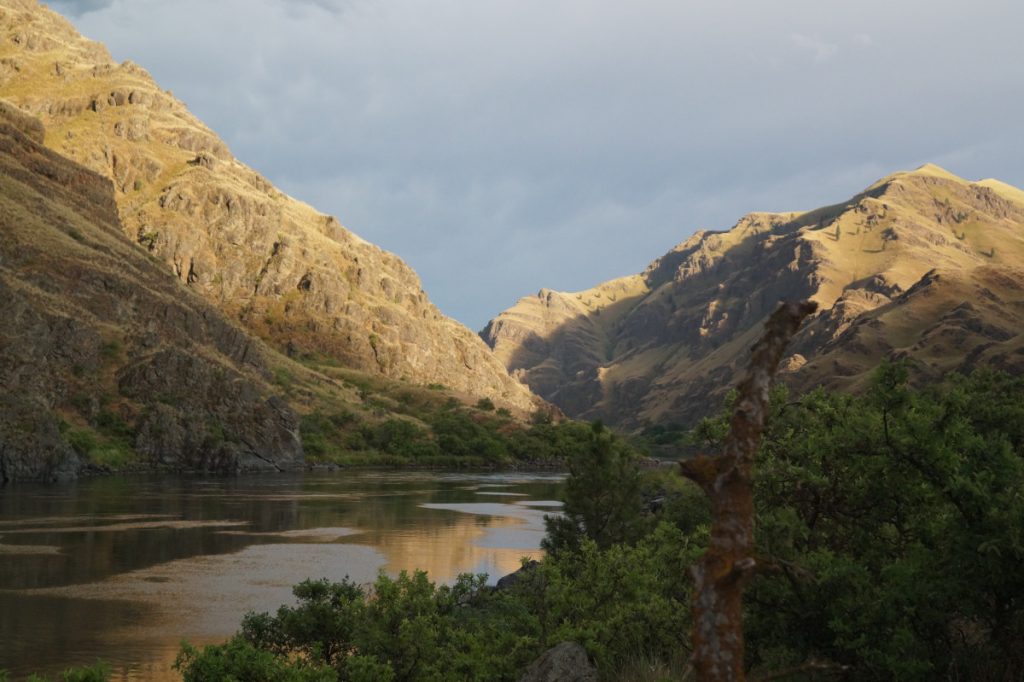
Cutting through the heart of this majestic and awe-inspiring canyon is the Snake River. After leaving Wyoming where it has gathered waters from the mountains of Grand Teton National Park and Bridger-Teton National Forest, the Snake River briefly turns northwest and picks up additional flow from the southwest corner of Yellowstone National Park. From there it turns south and then west, crossing southern Idaho before turning north into Hell’s Canyon along the Idaho-Oregon border. As it drops down into this deepening canyon, it passes through three long, narrow, back-to-back-to-back reservoirs: Brownlee, Oxbow, and Hell’s Canyon, which total 95 miles in length. The water also must pass through the three corresponding dams that form those reservoirs and share names with them.
It’s at the bottom of that third dam, Hell’s Canyon Dam, that the famous 80-mile stretch of whitewater rafting begins. That was where my wife Deborah and I put in on a Tuesday morning for a guided four-day three-night late June float.
Our whitewater rafting trip was booked through ROW Adventures. Arriving by bus in the small town of Cambridge for orientation the evening before, we met three other groups on the same trip: two families of four (one from Nevada and one from San Diego, both with a pair of high-school aged young women) and a three-generational family group of seven (with ages ranging from early 60s down to 13.) They all proved to be a lot of fun, and over the next four days we would have a good chance to get to know each other.
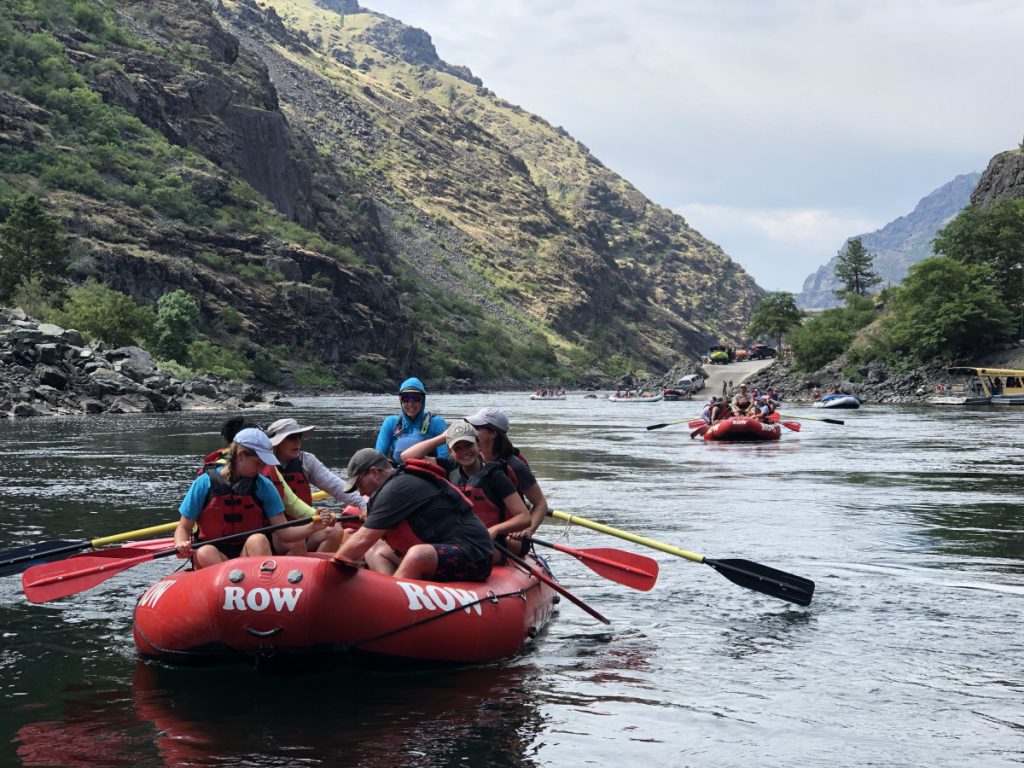
It was also a good chance to get to know the guides. The seventeen guests divided ourselves each day among four rafts, each with its own guide. Two of the rafts took six “passengers” each. Though steered and powered in part by a guide with oars, the passengers were armed with paddles and required to use them at times—especially in the rapids. Two larger rafts took only two or three passengers each (along with a fair bit of luggage) and were powered almost entirely by a guide with oars. After the first day, we also had a choice of paddling inflatable tandem kayaks.
Lead guide Connie at 67 was older than any of her clients. She’d been guiding for more than three decades. She remained on one of the oar rafts throughout the trip, and nearly always took the lead position (scouting and floating each rapids first). She told great stories, and was a wealth of information on the history and culture of the canyon. Three younger guides—Tyler, Mahaly, and Hillary, all in their twenties—rotated between the oar and paddle rafts. Two additional helpers, Millie and Scot, went ahead each morning oaring the heavy rafts loaded with remaining gear in order to get our camp set up before we arrived.
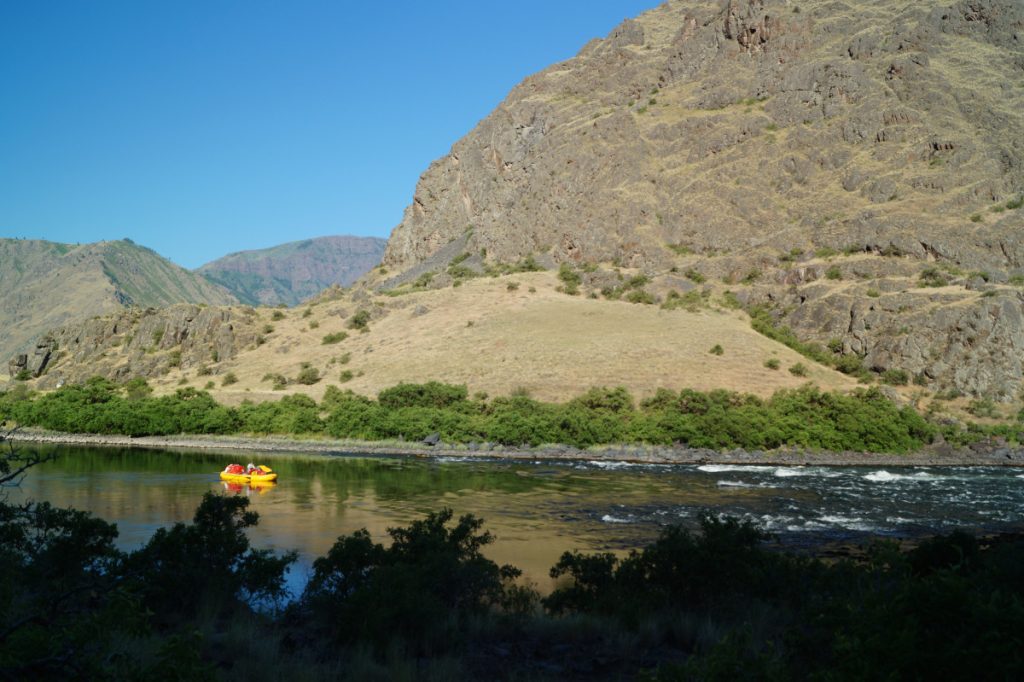
And, yes, we had a LOT of gear: food for ten meals for twenty-three persons, a lot of drinking water, stoves, cooking supplies, tents, sleeping bags and pads, tables, chairs, all our personal belongings, and even a portable outhouse tent (known as the “groover”). Much of the gear had to be packed into dry bags and strapped onto the rafts. They were impressive sights to see floating downriver.
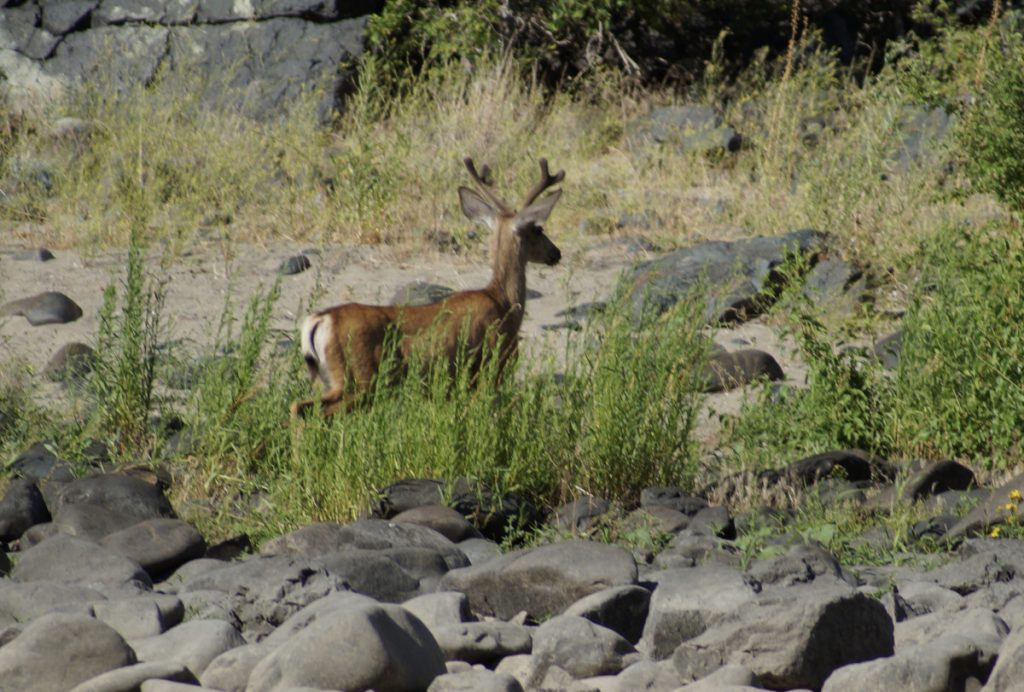
Over four days, Deborah and I had time in all the boats with all the guides, and also a full day in a tandem kayak. We saw several flocks of bighorn sheep, including right at the shoreline just a few dozen yards away. That was quite a treat. Although they were very good at appearing during times when I had my telephoto lens wrapped up safely in a dry bag.
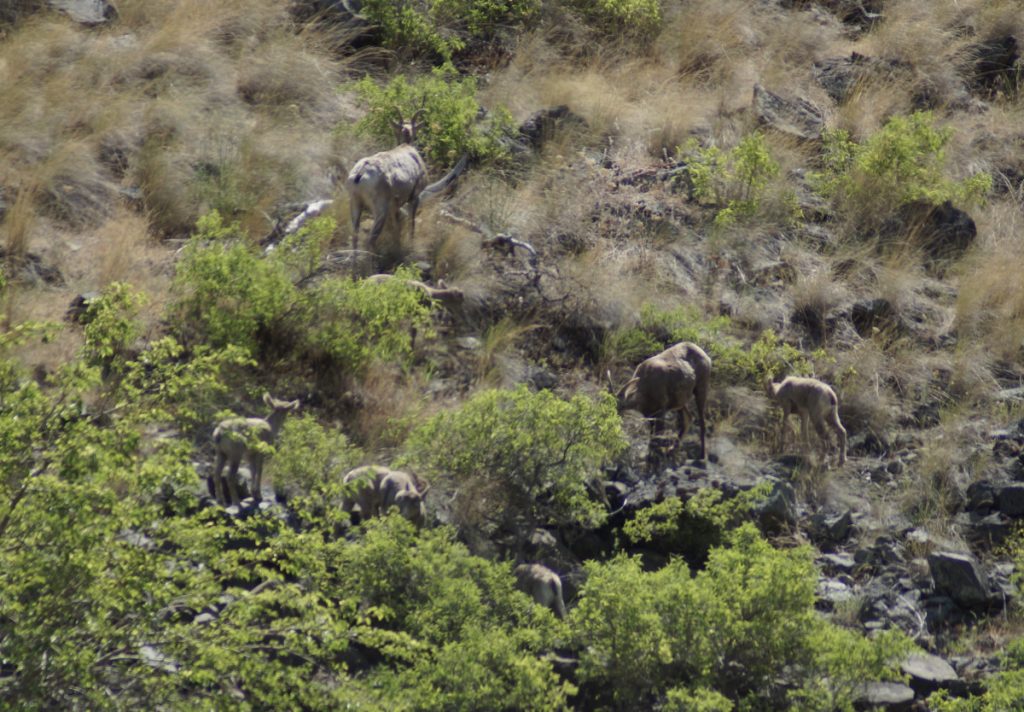
We also saw mountain goats. Our first sighting consisted only of small white specks high up a hillside, but later on we had a chance to see a couple flocks at the river’s edge. We also saw numerous mule deer, bald eagles, quite a few osprey, countless herons, lizards, one flock of wild turkeys that wandered past our campsite on the second night, and a variety of butterflies that liked to like the salt off the sand by the shoreline.
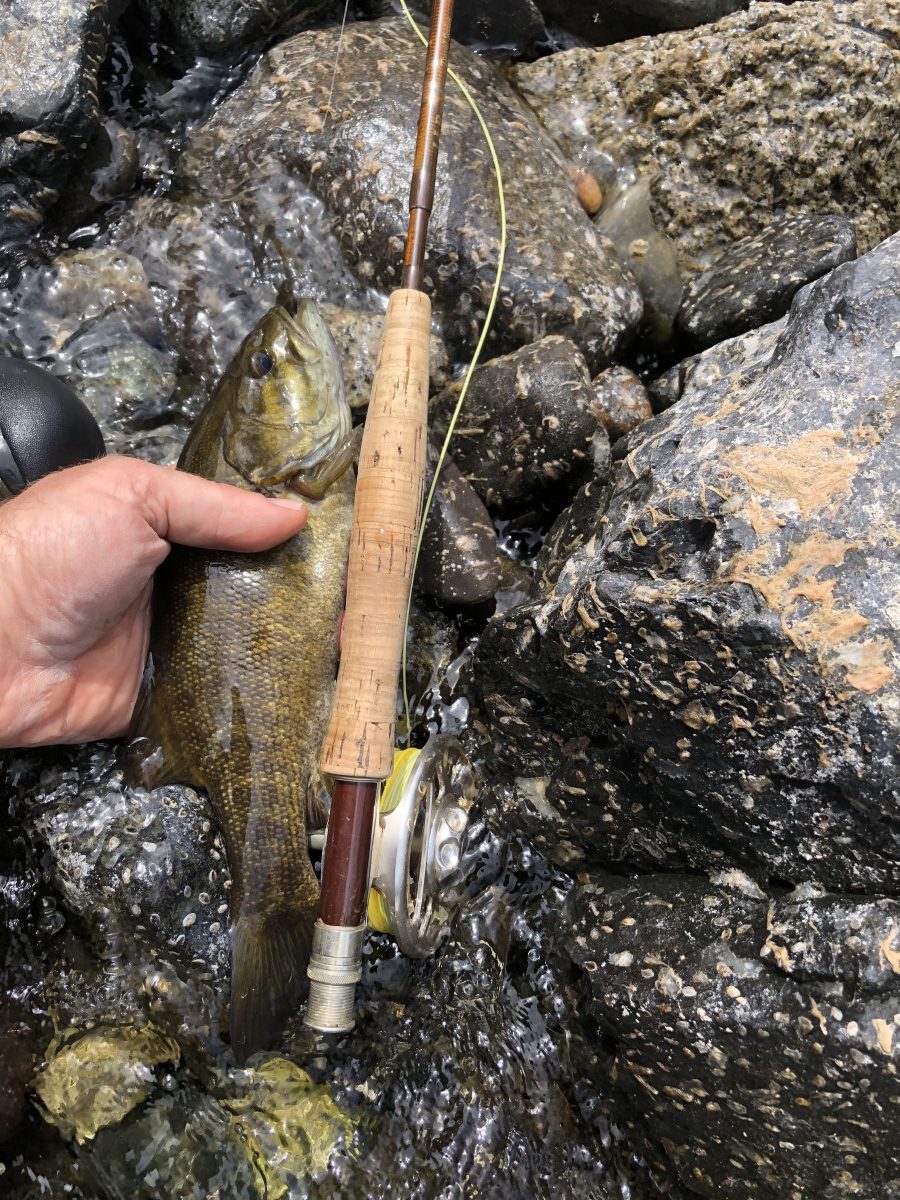
And I saw quite a few fish of several varieties. A few of those fish I got to see close up as I pulled them in with my fly rod. Most I just observed from the shoreline. The river is home to endangered sturgeon that can grow to 300 lbs. (I didn’t see any of those, nor did I attempt to catch one on my fly rod.) It is also a trophy smallmouth bass fishery, and holds rainbow trout (especially around the cold water tributaries). I saw numerous multi-pound carp cruising the shoreline, and huge numbers of congregating suckers I assumed were spawning.
The Snake River also held spawning salmon. It was in part those fish, and the future of the anadromous salmon in the Columbia River Basin, that had brought me there to learn and write. The Snake River—especially in its headwaters up three branches of the Salmon River on the Idaho side—annually hosts several spawning runs of king salmon, sockeye salmon, and steelhead. As recently as the 1950s, the combined spring and summer runs totaled 130,000. That accounted for roughly half of the salmon in the entire Columbia River basin. The indigenous tribes of the Pacific Northwest—including the Nez Perce who occupied the region around the Salmon River—were highly dependent on those salmon for food. Studies estimated between 300 pounds consumed per person per year (minimum) up to over 550 pounds.
The whole ecosystem was also dependent on those fish. Millions of pounds of nutrients brought inland from the ocean each year not only fed creatures like bears and eagles (in addition to the human dependence on fish), but those nutrients eventually get spread across the soil feeding plants.
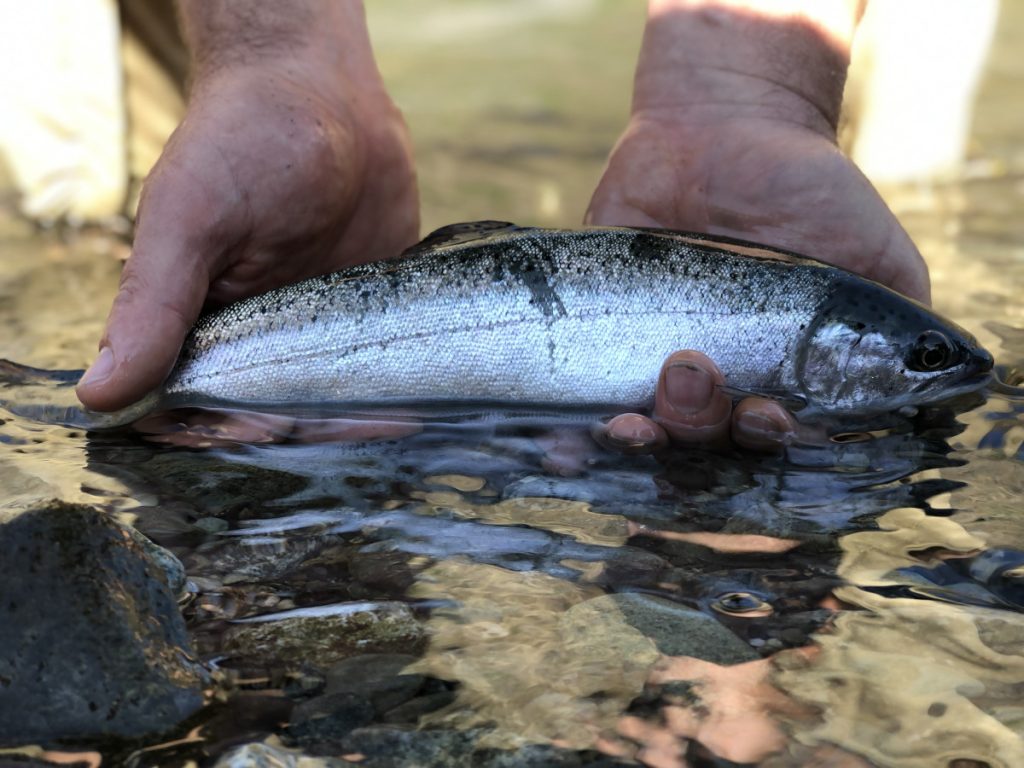
And it was an impressive run for other reasons, too. Salmon completing a spawn up the Snake River into the Salmon River traveled as far as 900 miles and climbed to 6000 feet in elevation to lay their eggs and complete their reproductive cycle. There is no other water in the world where salmon have been found to spawn at such a high elevation (higher than the tallest peak in Vermont!) And one would have to go to Alaska or British Columbia to find salmon traveling any longer distance upriver.
I thought about this impressive migration several times as we drifted down the same river those salmon had to swim up. Though I didn’t think about it too much when we were plunging and bobbing through class 3 and class 4 rapids. Then I was mostly thinking about not getting dumped into the river. And, yes, some of us did end up taking an unintentional swim. But you’ll need to wait for my next column to read more.
Part 2
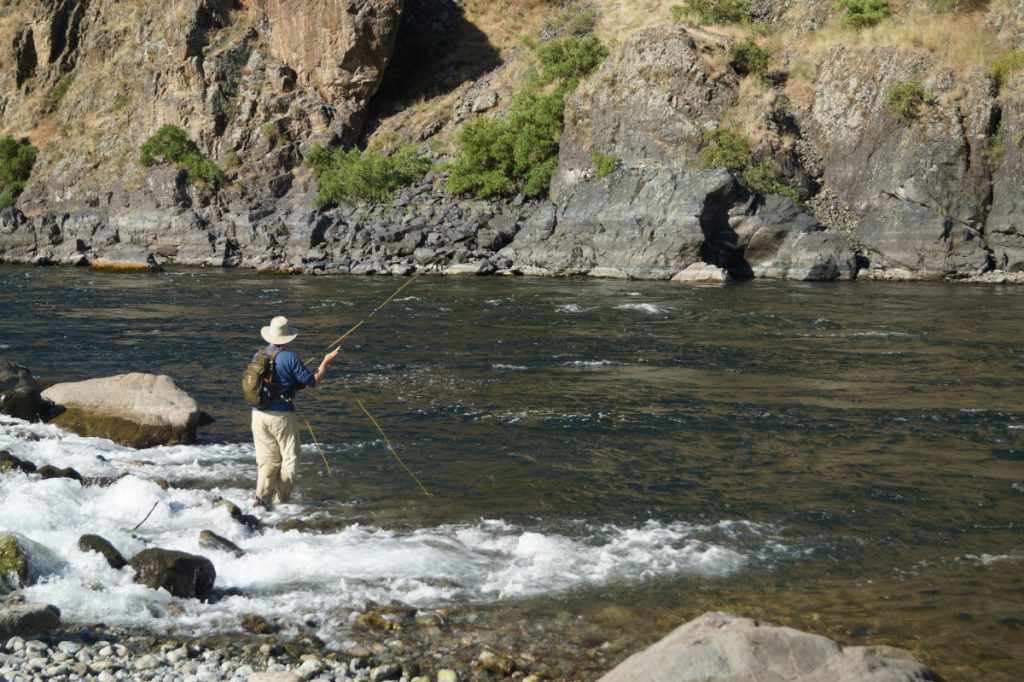
It’s the third morning of our four-day float trip with ROW Adventures down the Snake River along the Idaho-Oregon border. My wife Deborah and I sit in the shade of one of the rare clusters of trees near the bottom of Hell’s Canyon. Though at times during our float we’ve felt the impact of the “heat dome” that tortures most of the continent west of the Rockies, the morning air feels delightfully cool. I’m sure the previous night’s intense thunderstorm wheich sent us running for shelter helped bring in some of that cool air.
We finish a hearty breakfast prepared by our guides. Along with fresh cut fruit and hot brewed coffee, it includes real maple syrup on French toast. The maple syrup is from New Hampshire rather than Vermont, but we happily use it anyway. Most of the other guests—all with California roots—choose the Log Cabin corn syrup instead of the maple syrup.
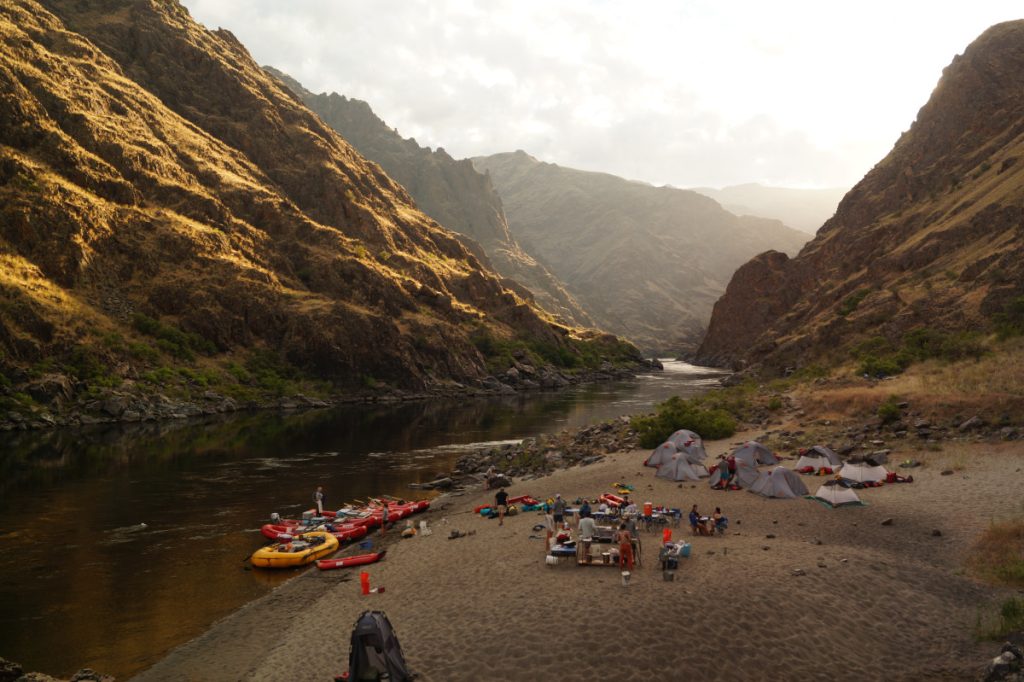
After breakfast, while the guides pack up the rafts and clean camp, the seventeen guests discuss which rafts we’d like to be in today. The largest two rafts take at most three passengers in addition to a lot of gear. The guides do almost all the work rowing them from the middle, leaving the passengers sitting comfortably with nothing to do but relax and enjoy the ride. Deborah dubbed these “princess boats” after we found ourselves in one on the first morning. The name stuck. Being in a princess boat didn’t prevent us from getting completely drenched several times the first day as we navigated through class 4 rapids. In one of those bigger rapids on the first day, one of the guides and two of the other guests went for a “swim”—a euphemism for getting tossed out of the boat.
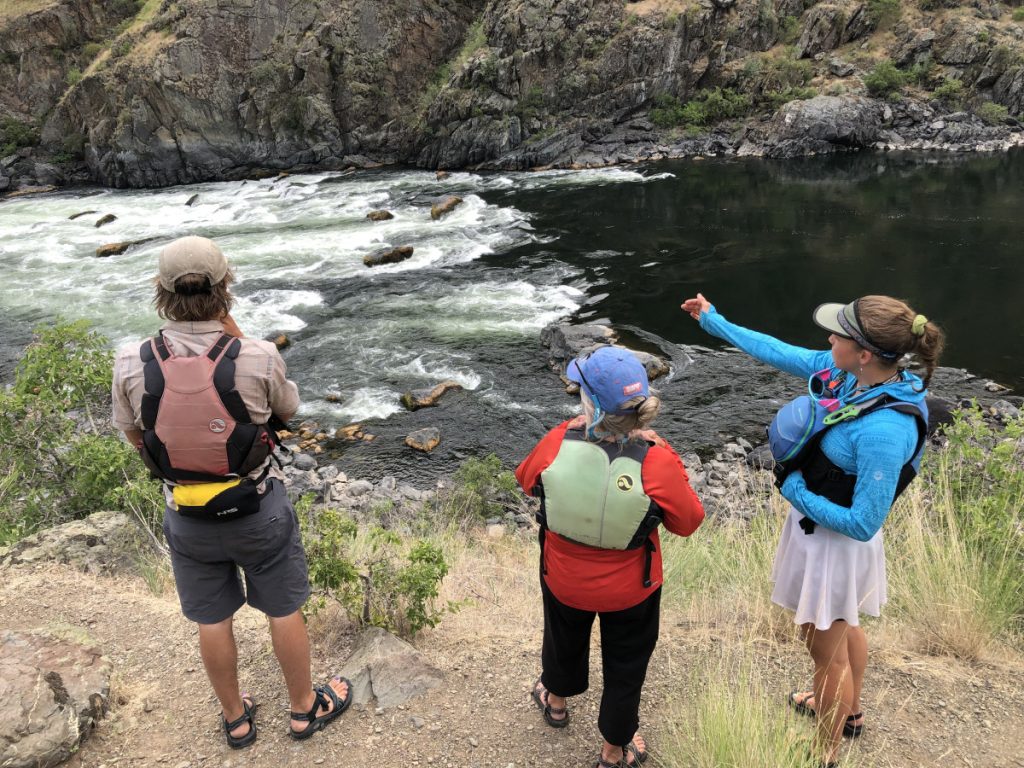
On the second afternoon we claimed a seat in one of the smaller rafts on which six passengers provided additional paddle power under the direction of our guide. There were no more class 4 rapids, but the class 3 did an equally effective job at drenching us. On rare occasions when more than twenty minutes passed between rapids, water fights broke out among the rafts. The regular soakings from cool river water helped us survive the heat.
On this third morning, Deborah—not normally a thrill-seeker—surprises me by suggesting we take one of the tandem inflatable kayaks. (With all the class 4 rapids now behind us, the guides had inflated the kayaks as another option.) “We’ll be going through class 3 rapids,” I remind her, knowing her aversion to physical risks. My comment does not dissuade her. So after slathering on 100 SPF sunscreen and donning our life jackets, we squeeze helmets over our hats and we settle into the two-person inflatables.
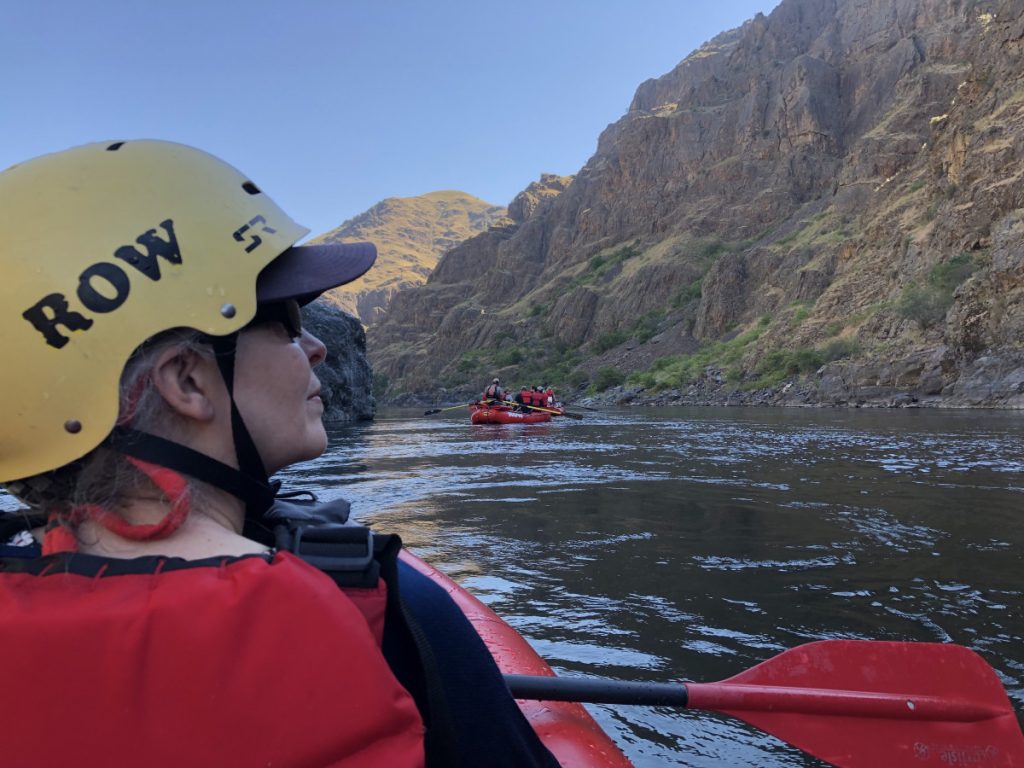
We don’t have long to prepare before we hit our first class 3. Although neither of us have ever pole-vaulted, Deborah says she feels like a vaulter as she digs her paddle deep into the water and we propel ourselves up and over the top of a towering standing wave. Then we are down into the trough. A wave of water engulfs us, trying to send us for a swim while spinning the kayak sideways. Somehow, we both stay in the kayak. We paddle hard to straight ourselves and hit the next wave straight on. Near the crest, I dig my paddle deep into the water to keep us from spinning. Except for an instant there is no water below me to dig into, and so my big effort results in the top of my paddle flying free and whacking Deborah in the back of the head. (I repeat that maneuver several more times over the day making us both thankful for the helmets.)
The rest of the day goes a lot like that. We get more used to the kayaks, the rapids, and each other as we go. Only once do we get a little nervous when coming upon another class 3 and being warned by the guides to swim hard left if we get tossed. “You really want to avoid the rocks on the right”, they tell us. We make it through without getting tossed.
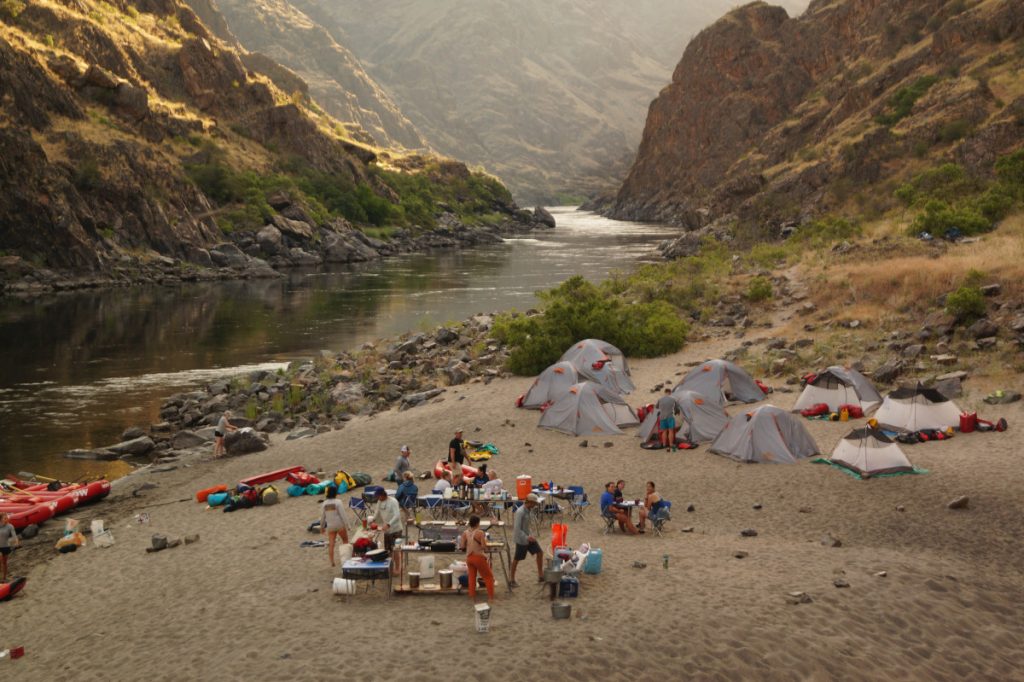
In the evening we arrive at a beautiful sandy beach where the luggage rafts have already arrived ahead of us and set up camp. The sand is scalding hot—too hot to walk on without sandals—so we huddle under big umbrellas, drink cold beverages, and eat the hors d’oeuvres set up by the guides. “Whatever they pay the guides, it isn’t enough,” my wife remarks. She will say that several times while watching the guides row the boats hard all day, haul luggage, and prepare the meals. (She repeats that especially when they have to deal with taking down the portable outhouse.)
We also cool off by going for a swim in the deep eddy out of the main current. The guides and guests have balancing competitions on upside-down kayaks. Jake, one of the youngest members of the company, beats everybody (including me rather easily and then the defending champion guide who puts up a longer battle). At dinner we are stuffed with ribs and garlic mashed potatoes.
My arms are tired from a long day of paddling with muscles I don’t normally use in that way. Our tent is hot, and there are no trees at this site, but when the sun drops behind the ridgeline a cool breeze begins to stir. Risking an invasion of insects, we unzip both tent doors and let that air pass over us. Eventually I drift off to sleep.
Part 3
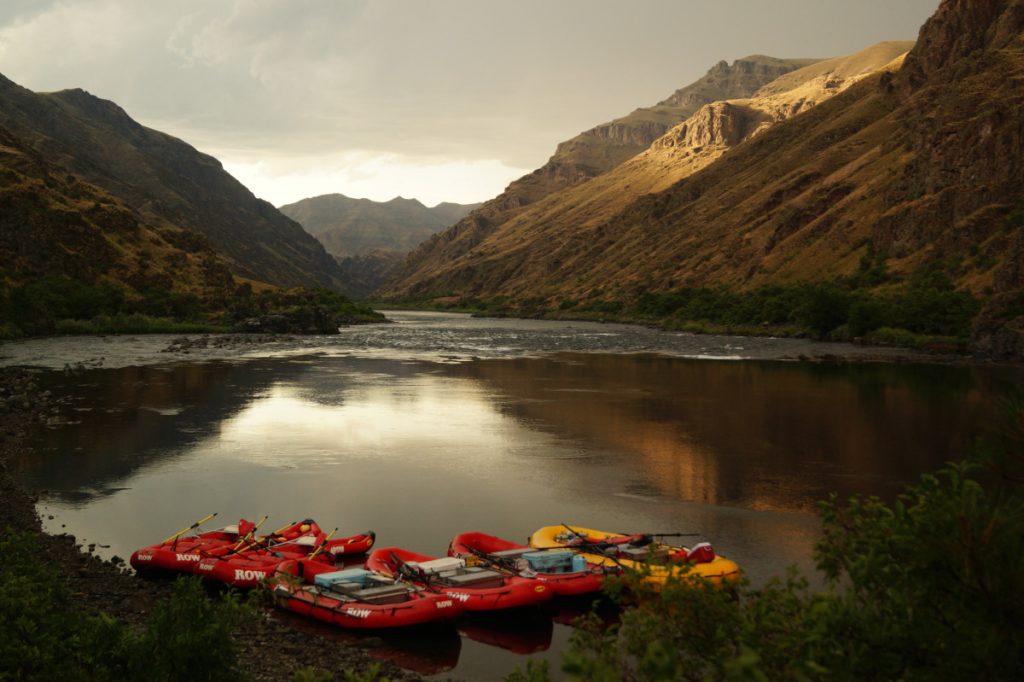
Morning light creeps into Hell’s Canyon, carving the hillsides with light and shadow in just a few minutes as neatly as the water has been carving it for millennia. I look up the slopes for a glimpse of one of the wild goats, bighorn sheep, or mule deer that we have seen several times along the trip. There are none to be seen this morning. I take my mug over to the table where the guides are just setting out a thermos of coffee.
The trip has been billed as float trip through the deepest canyon in North America. And it’s a very enjoyable one. The setting is spectacular. The other guests are fun to hang out with. The guides are all great. Even without fishing, it’s far more than enough to make the trip worthwhile. We are glad we’ve come. But Snake River—along with many of its tributaries—is also notorious for its fishing. And for me anything involving water is potentially a fishing trip (even if nobody else on the trip has a fishing rod). So as I wait for breakfast, I walk twenty yards down to the river with my 9-piece travel fly rod as I have done each prior evening and morning and on one of the lunch breaks.
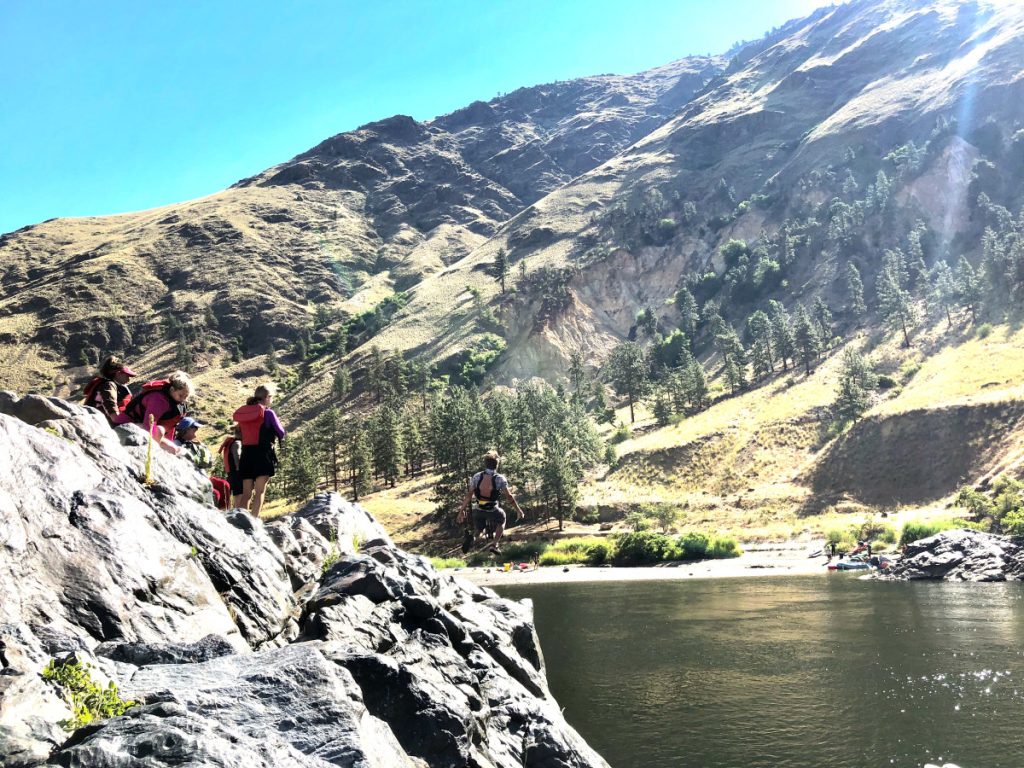
On our very first lunch break on the first day, in about 45 minutes while the guides prepared the meal, I’d managed to land six fat smallmouth bass. With the added advantage of the swift current, the fish had proven admirable fighters. One particularly good-sized bass had broken my line. I’d also hooked a rainbow trout in the swift current, and fought it long enough to catch a glimpse of its sides and identify its species before it, too, snapped my line. On the second morning I’d hiked half a mile from camp to fish where a cold-water tributary poured into the Snake River off the steep mountainside on the Idaho side. There I had managed to actually land one fat and brightly colored rainbow trout before the raft came to pick me up. But on the rest of the trip it was all smallmouth fishing. Very good smallmouth fishing.
At the third campsite, the smallmouth action is a little slower. I catch a couple, but it’s not nonstop action. Still, I enjoy the remote setting, so different from anything I ever see in Vermont. Back at the beach, I spot a couple big carp cruising the quieter water. I think of some of my carp-fishing friends and consider casting for these fish. They look to be at least six pounds—bigger than any of the bass I’ve caught. But I don’t have any carp flies, and I have no experience carp fishing. So I ignore them. I do manage to land and release something in the whitefish family making it a three-species trip.
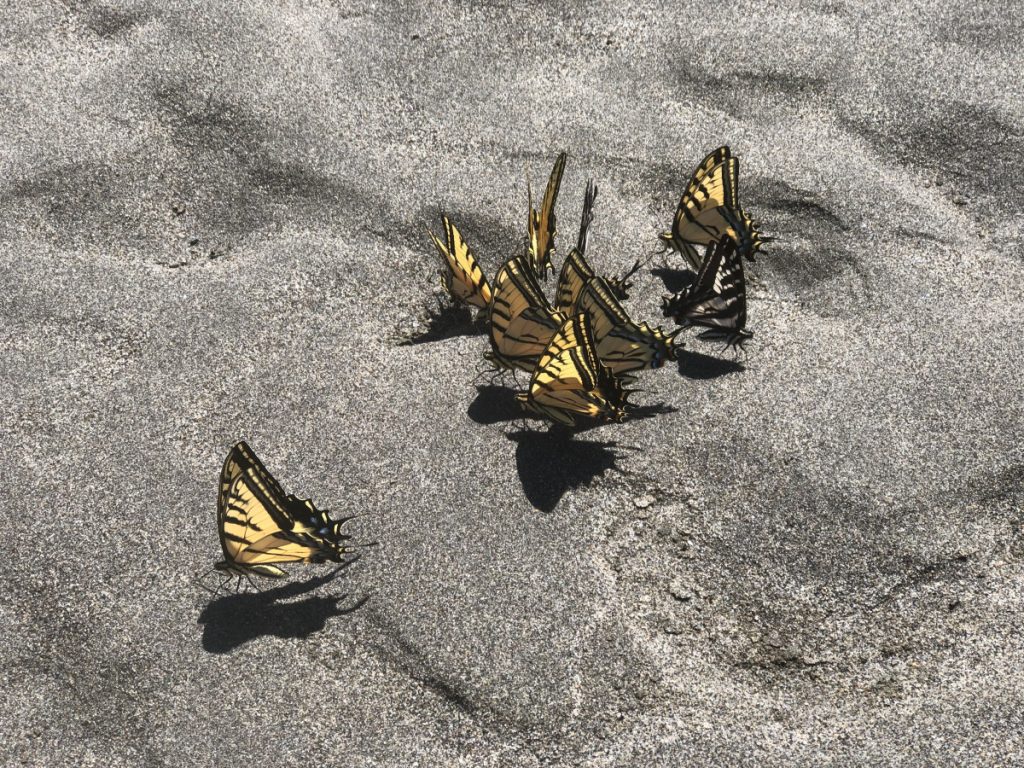
•
On the fourth and final morning, I learn that Jake is interested in kayaking, but can’t find a partner. Deborah is happy to return to one of the paddling rafts so I kayak with Jake. Having seen his excellent balance, I figure we’re probably safe. And we are. I even manage to avoid hitting him in the back of the helmet with my paddle.
The only moment I feel anxious is when we approach the confluence with the Salmon River. One guide warns us of challenging currents, and suggests we stay on the opposite side of the river and avoid the confluence. However another guide in another raft gives us more confidence. We will simply have to paddle hard out of the eddy into the main flow of the Salmon, she tells us. And we need to be prepared for the current to catch us hard in the side. It’s that part that makes me anxious. But after watching two of the big rafts navigate it, we give it a go. Despite the momentary catch of breath when the current catches us and it feels like we’re going to get flipped, it proves to be a piece of cake.
And as we enter into the water of the Salmon River, I start thinking again about salmon. The powerful current—usually flow at tens of thousands of cubic feet per second of water—rushes below us down toward the Pacific, carrying us a pretty good clip. I think of the amazing annual feat of the salmon swimming up that river, against that current. I consider how the combined runs of salmon and steelhead up this watershed which totaled 130,000 in the 1950s has now dropped below 10,000 fish a year. The primary cause of the decline is both well-known and obvious: the myriad dams on the Snake and Columbia Rivers.
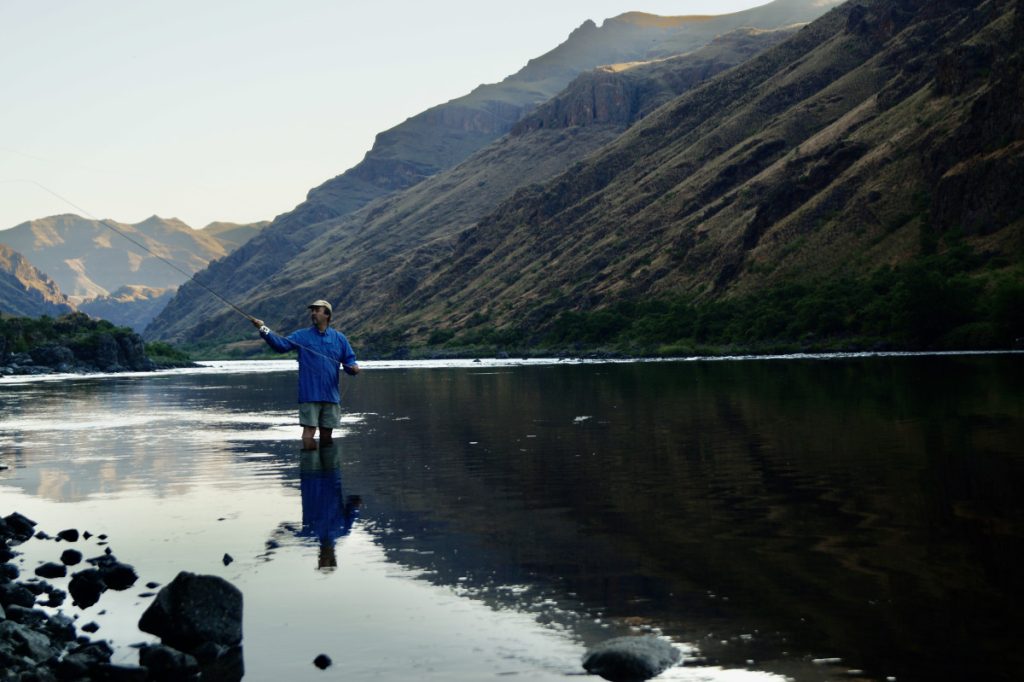
The three dams on the upper Snake that we passed on our drive the first morning are entirely impassable by fish and have completely eliminated any salmon runs beyond that point. The four dams on the lower Snake—below the confluence with the Salmon River—and several on the Columbia River, are in theory passable for migrating salmon via fish ladders. But many fish don’t make it. And even with some successfully migrating back to their natal streams to spawn, the mortality rate for the juvenile salmon returning to the ocean is brutally high. The dams turn a relative quick downriver trip on fastmoving current into a slow slog across long reservoirs. Even for the salmon that survive the hydroelectric turbines, a trip that should take only a few weeks in cold water now takes a few months in much warmer water. Massive budgets spent on hatcheries and on fish transport have done nothing to salvage the salmon runs. The only hope for the fish is almost certainly the removal of the dams on the lower Snake.
But those dams are used for irrigation, navigation, and generation of electricity. As necessary as dam removal may be for the future of salmon—and for ocean creatures like orcas as well as terrestrial creatures that depend on salmon or food—it is not an easy sell politically.
•
A wonderful 80-mile float trip ends when we reach our take-out. A bus takes us another 40 miles to the small city of Lewiston. We step out of the bus onto tarmac and air temps in the upper 90s. It’s supposed to be over 100 tomorrow. We no longer have river water to keep us cool.
I think about how increasing common heat domes with increasingly hot temperatures will make it even more difficult for salmon to survive in a dammed river. I think the solution should be obvious. But not easy. I think also of the current drought in the west and the increased demands on the water stored behind those dams. I think I will be happy to hop on an early morning flight back to Vermont and get out from under the heat dome before the sun is up in the sky.
